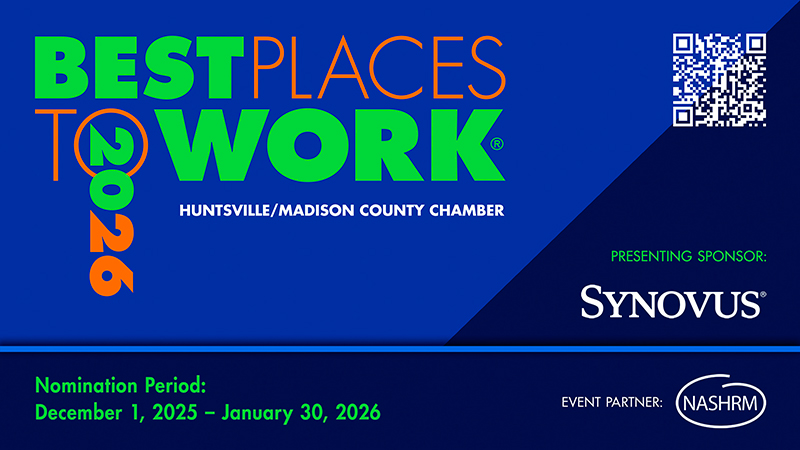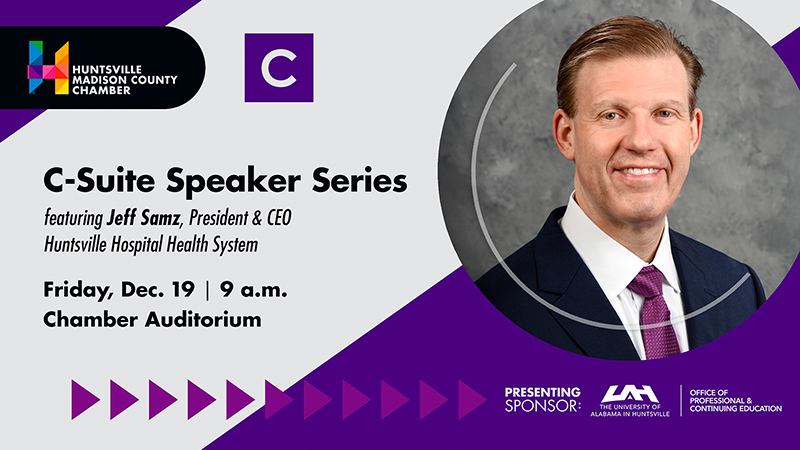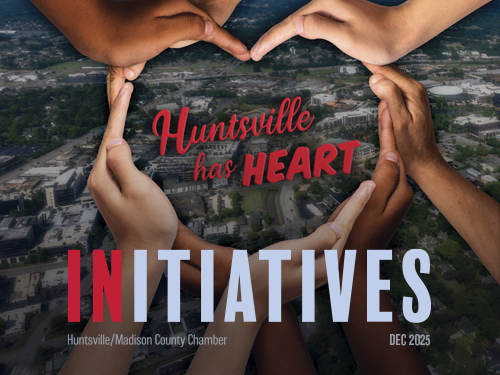By Adam Smith
City of Huntsville
If the adage is true that “development follows roads,” then Huntsville’s growth shouldn’t be a surprise to anyone. The City’s major arteries, collectors and multi-lane surface streets make it easier to move both products and people, which are attractive qualities to potential businesses and industries.
The cost to build and maintain roads isn’t cheap, and the process can often take several years from conception to fruition. That aside, Mayor Tommy Battle and the City Council believe the return on investment outweighs the cost and temporary irritation.
Roads and infrastructure have been a major cornerstone of Mayor Battle’s administration because he doesn’t want the City’s galactic growth to result in rush-hour gridlock. He has long strived to ensure 15-minute commutes for citizens, no matter where in the City they reside.
“Right now, our transportation grid is our No. 1 priority,” he said. “We have to grow our infrastructure and road system; it’s part of our big master plan.”
[divider height=”15″]
A quality of life issue
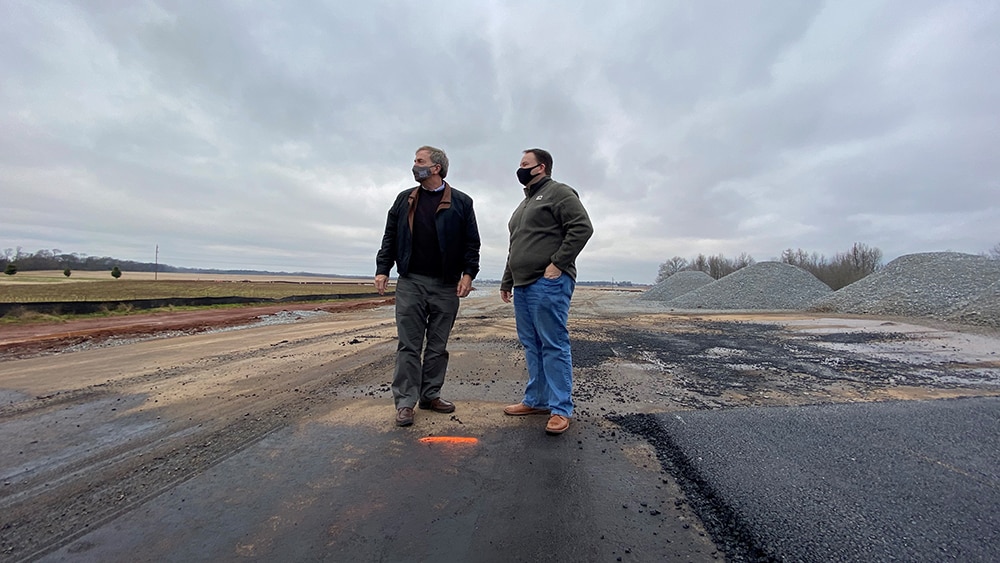
It’s easy to think of roads as nothing more than overpriced asphalt with a dividing line. Citizens tend to notice them more when they are in disrepair or if work impacts their commute.
Huntsville’s transportation grid has played a major role in the City’s continued success in attracting large industries like Mazda Toyota Manufacturing (MTM), Polaris, Facebook and GE Aviation, to name a few. Those companies brought thousands of jobs to the Rocket City, but they are nothing but empty buildings if employees can’t get there.
In the case of MTM, the City’s promise to improve three roads helped seal the deal. The largest of those projects is the four-lane Greenbrier Parkway, a $77.3 million four-lane highway that should open later this year. It spans from Interstate 565 to the south to Huntsville-Browns Ferry Road to the north, near the intersection of Interstate 65.
“They have to get 6,400 people to work and back home, which is more than 12,000 trips per day,” Battle said of the MTM plant. “We needed to get workers in and get them back to their cars and homes quickly. That’s part of quality of life. Any time you can spend with your family or doing recreational activities, that’s what it’s all about.”
[divider height=”15″]
Restore Our Roads history
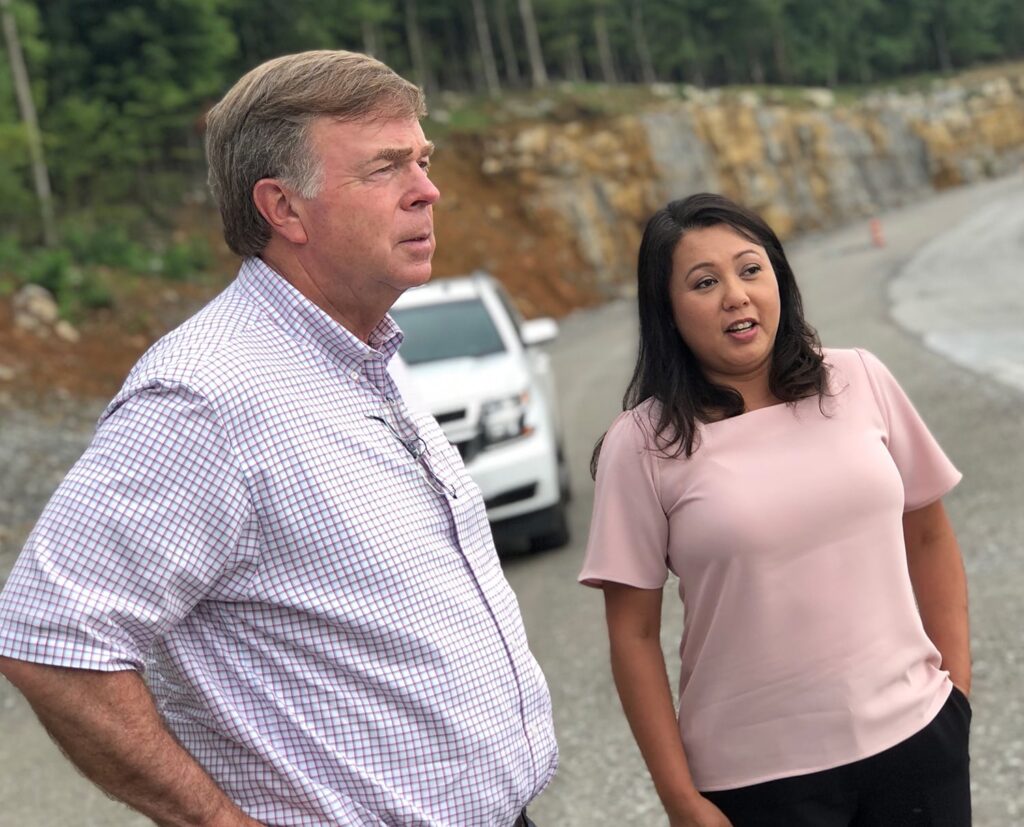
Battle, who began his fourth mayoral term in 2020, has seen ambitious road projects come to fruition, thanks to both a progressive City Council and federal and state funding. When the Alabama Transportation Rehabilitation Improvement Program (ATRIP) kicked off in 2012, the Huntsville-Madison County area received the lion’s share of the funding.
In 2014, Huntsville debuted Restore Our Roads, a partnership with the Alabama Department of Transportation (ALDOT). The $250 million cost-sharing initiative focused on projects the Metropolitan Planning Organization (MPO) identified as priorities.
Restore Our Roads launched during a time when projects in other parts of the state were being canceled over a lack of funding. City Director of Engineering Kathy Martin said some citizens questioned why Huntsville would spend its own money to improve state and federal roads, but explained the City needed to be a part of the solution instead.
“Without that agreement, I don’t know that we would be reaping the benefits we are today,” Martin said. “It was a bold move by our leadership, but it worked.”
Curtis Vincent, region engineer for ALDOT, explained the joint funding agreement is a win-win for the state. He said Huntsville’s own investment has helped land road dollars that might have been committed elsewhere.
“Transportation funding is limited, and in a state facing an ever-growing backlog of capacity needs, projects must be prioritized,” he said. “For ALDOT, projects with that ‘bang-for-your-buck’ factor are certainly more attractive. This agreement presented an opportunity to double the return on state dollars in transportation improvements.”
[divider height=”15″]
Sidetracks
Identifying, planning and completing projects may seem like a cut-and-dry process, but there’s nothing simple about building roads. Road projects go through rigorous proposal, planning and approval processes before funding discussions even begin. There are also property and right-of-way acquisitions, which can result in legal system involvement.
Martin said planning large-scale projects can often illuminate the need for smaller, related projects. For example, while planning improvements to South Parkway, another project was added – a connector off Benaroya Lane, to help ease congestion during construction. Work on U.S. 72 and Memorial Parkway uncovered the need for new streetlights and other connector roads that became part of the Restore our Roads initiative.
The planned six-laning of U.S. 72 from Providence Main to County Line Road resulted in expediting major improvements to the intersection of U.S. 72 and County Line Road while design continued for the remainder of the project.
“We were able to pull that smaller project out and get it done,” Martin said, adding it was the quickest way to provide benefits to the community.
[divider height=”15″]
The future

Restore Our Roads will undoubtedly improve commutes for Huntsville citizens and visitors, but there are other projects of importance to Battle’s administration. Three of those would have long-term impacts on Huntsville’s road infrastructure and growth.
“It is an exciting time to be in the civil engineering profession and have the involvement of so many unique projects that are occurring due to the economic success and growth of Huntsville,” Vincent said.
The widening of I-565 from I-65 to County Line Road will ease rush-hour congestion and accommodate Mazda Toyota Manufacturing workers entering and exiting from the Greenbrier Parkway interchange. The bulk of the construction work is complete and awaits resurfacing this spring.
Martin said the City is also looking at improvements to the I-565 and Memorial Parkway interchange. “It needs attention,” she said, adding it wouldn’t get better without taking an initial step to bring attention to the project.
Also under consideration is a bypass that would parallel Memorial Parkway and ease congestion on both Interstate 565 and the Parkway. That project may soon transition from possibility to necessity with FBI’s relocation at Redstone Arsenal and Huntsville’s selection as the preferred site of U.S. Space Command headquarters.
“That would give us a secondary outlet to Memorial Parkway, and it would provide us a relief valve,” Battle said. “When the Arsenal goes from 40,000 people to 55,000, that will be important to us.”
Martin said none of the projects underway or on the horizon would be possible without the City’s leadership. She credited Battle and the Council for being proactive in their approach.
“Restore Our Roads really moved the needle in our transportation infrastructure because Huntsville had the initiative to go to ALDOT and say, ‘The City is willing to put up 50 cents on the dollar (toward these projects),’” she said. “Huntsville’s never been one to just sit back and watch.”
To learn more about Huntsville’s road projects, visit HuntsvilleAL.gov/roadworkprojects.
Project updates
Today, three major projects are now in the rearview mirror:
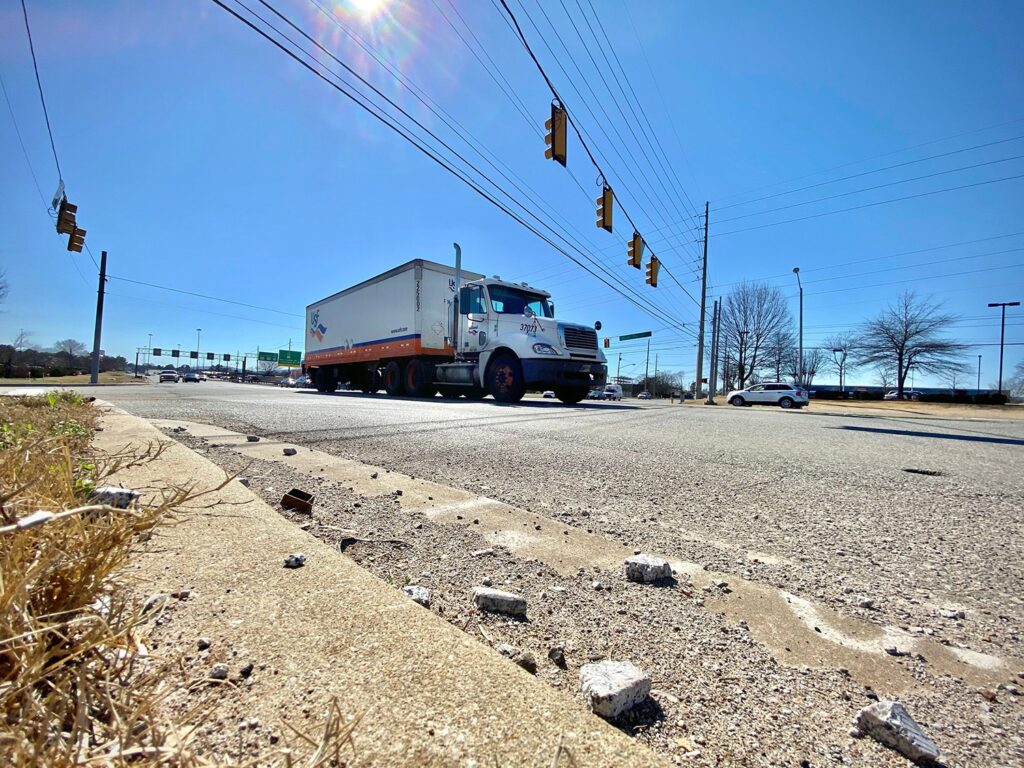
- Improvements to U.S. 72 East at Moores Mill and Shields Road
- Improvements on South Memorial Parkway from Martin Road to Lily Flagg Road to include three new overpasses; and
- The widening and resurfacing of Cecil Ashburn Drive, though a few punch-list items remain
In-progress projects include:
- Widening University Drive from Providence Main to County Line Road
Project design is 30% complete, with a public involvement meeting scheduled for this fall. ALDOT anticipates right-of-way acquisition to begin in 2022. - Improving North Memorial Parkway between Mastin Lake Road and Winchester Road
This $50 million project will put a new overpass at Mastin Lake Road and include 1.73 miles of improvements along North Parkway to include access management to Winchester Road. The project’s goal is to reduce congestion between Sparkman Drive and Winchester Road. ALDOT has completed right-of-way acquisition and cleared about 90% of impeding structures so far. Utility relocations are currently being performed, with roadway construction scheduled for late 2022. - Improving South Memorial Parkway between Weatherly to Hobbs roads
A $15 million project, this will improve four miles of access and intersections. It will include closing and opening medians and reconfiguring driveway locations, turn lanes, intersections and access management to improve traffic flow. Design is 50% complete, though construction is on hold pending new development in the area. A virtual public involvement meeting about the project will be held this spring. - Completing the Northern Bypass from Pulaski Pike to U.S. 231
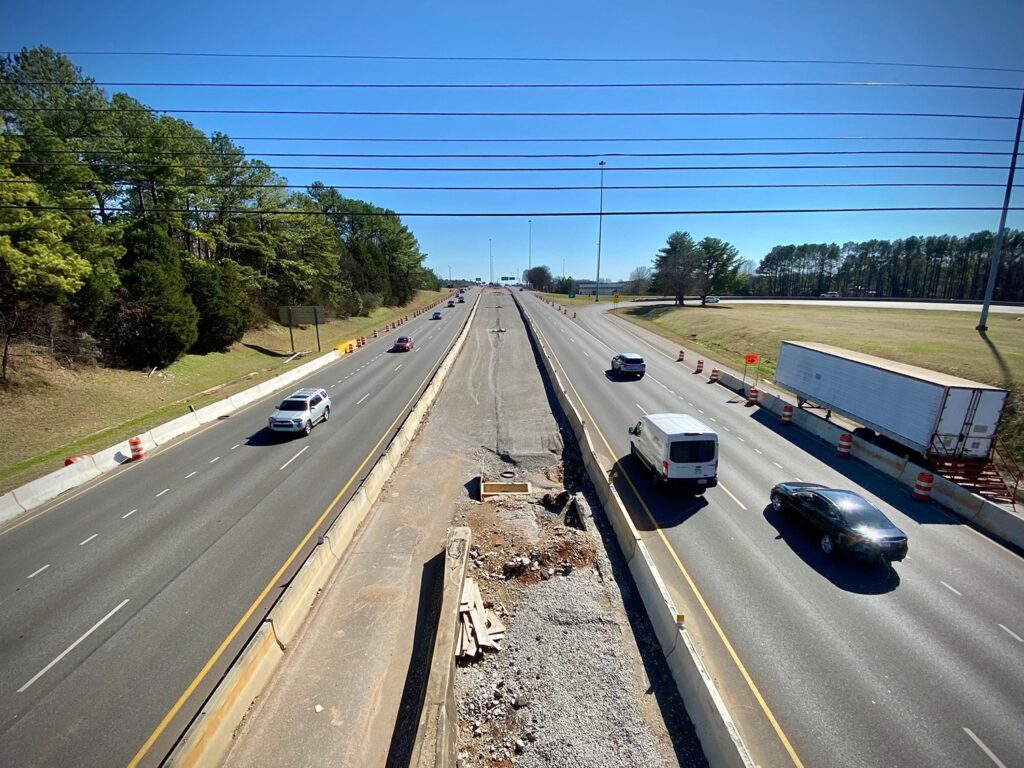
When completed, the widened State Route 255 (Research Park Boulevard) will be a key part of the City’s northern bypass. This $53 million project consists of 3.4 miles of four-line divided highway and one mile of road improvements along North Parkway. The project will be part of the City’s future loop road extending State Route 255 to connect Research Park Boulevard to Martin Luther King Boulevard, North Memorial Parkway, to Winchester Road, 72 East, 431 South, Cecil Ashburn Drive, and South Memorial Parkway. Design and right-of-way acquisition are nearly complete on this phase of the project, and utility relocations should begin later this year. Roadway construction is tentatively scheduled to start next year.
- Widening State Route 255 (Research Park Boulevard)
Though not originally a Restore Our Roads project, the list was amended to include improvements to State Route 255 (Research Park Boulevard) between U.S. 72 and Old Madison Pike. The $23.5 million project includes two new lanes along S.R. 255 and a new bridge at Old Madison Pike that will also accommodate pedestrians and cyclists. The project could wrap up in late 2021.
This article appears in the April 2021 issue of Initiatives magazine, a publication of the Huntsville/Madison County Chamber.


